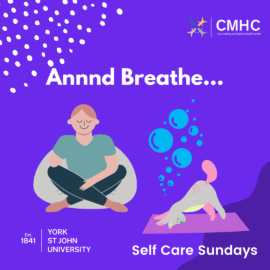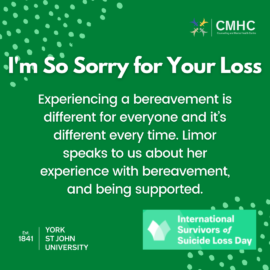For European Day of Languages, Dr Maja Skender-Lizatovic shares her story with her love of languages, and path to the Community Language School.
“I have discovered my love for languages very young as knowing some English or German allowed me to enjoy all those cool cartoons on satellite TV more, and to play on the beach with children from different countries who came to my touristy home town for holiday during summer. Language learning never felt like a chore. I had enough motivation to do it without being prompted. But I understand that everyone is not the same. Learning a language is hard work and takes a long time. And as I always say to my Japanese students, for a very long time you will be really ‘bad’ at that language. You will make mistakes and sound odd. I do disclose the hack to that fact, which is to get comfortable with it and focus on the things you want to do with that language. For me, and for most of my students, it was always communication with people. Through learning Japanese I was able to make many friends from various countries, and to live and learn and work in Japan. Japanese is now a big part of my personality, and I feel like people who do not understand Japanese cannot see that side of me.
During my studies in Japan I started feeling I want to contribute somehow with my love for learning and teaching languages. I got involved with a non-profit organisation at my university which provided learning support for migrant middle-school students in their home or education language in addition to Japanese. These were students with links to a variety of languages and cultures. There were students who spoke, for example, Tagalog or Burmese at home, English at their former school and with their peers, and now they were in Japan, trying to learn Japanese and school subjects. I was amazed at what the students were doing. However, the students would get easily discouraged as they could not always understand everything, made mistakes, or they felt shy about their pronunciation. Speaking another language as a learner makes you very vulnerable. You become a language minority and people are not always kind and understanding about mistakes or different accents. On top of that, the students had to deal with their coursework, which was fully in Japanese, and get good marks to be able to progress into high school.
This is a lot to deal with. Luckily, in the sessions that the non-profit organisation provided, the students found themselves in a community of other students who are in a similar position and they saw that they are not alone in this. The volunteers were devoting all of the session time to them and adjusting it to their needs. By using their home or education language the students were able to understand the content and connect it to themselves. The next step was to use that understanding when expressing themselves in Japanese in school classes. This kind of approach turned out to be quite successful. The students did manage to understand the school content better and get good marks, but the biggest and happiest change we saw was in the students’ attitude towards their home/education language, towards their Japanese and towards themselves. They stopped seeing their home/education language as a hinderance in their Japanese learning. They stopped seeing their Japanese as somehow deficient. There was so much they could already do with the languages in their repertoire and they gained confidence about themselves.
Although at first learning Japanese seemes like a pressing issue for migrant children, one needs to think what happens to the people and parts of the students’ experience that are connected to their home, heritage or education languages. In the case of the non-profit organisation I volunteered for, we were able to use these languages as resources to support learning in Japanese. However, these languages connect the students to their family and friends too. It would be a waste to lose that. They would lose a part of themselves.
The Community Language School works on a similar principle albeit with the aim to promote learning of home and heritage languages in children of 5-16 years of age. We want to offer a safe place, or better yet a person, a community for those children to use their home and heritage languages.
The classes are not about language proficiency. This is not your traditional classroom. There is no grammar instruction, there are no tests, there is no homework. The volunteers will strive to design fun, age-appropriate activities with focus on interaction. This coincides with what the families who signed up for the classes are looking for.
In the Community Language School it is okay to not to understand, it is okay to make many mistakes, it is okay to use any language that pops in your head. The aim is for the children to become comfortable with using the language regardless of the stage they are in and to try to communicate in the language in whichever way they can at that point.
We know and believe in the value of learning languages and we want our students to see the value in being bi- or multilingual, to see the value in having a link to other languages and cultures. This change in how they see the language and the culture it connects them with, and thereby the way how they see themselves, is our biggest aim.”
~
Author: Dr Maja Skender-Lizatovic
~



